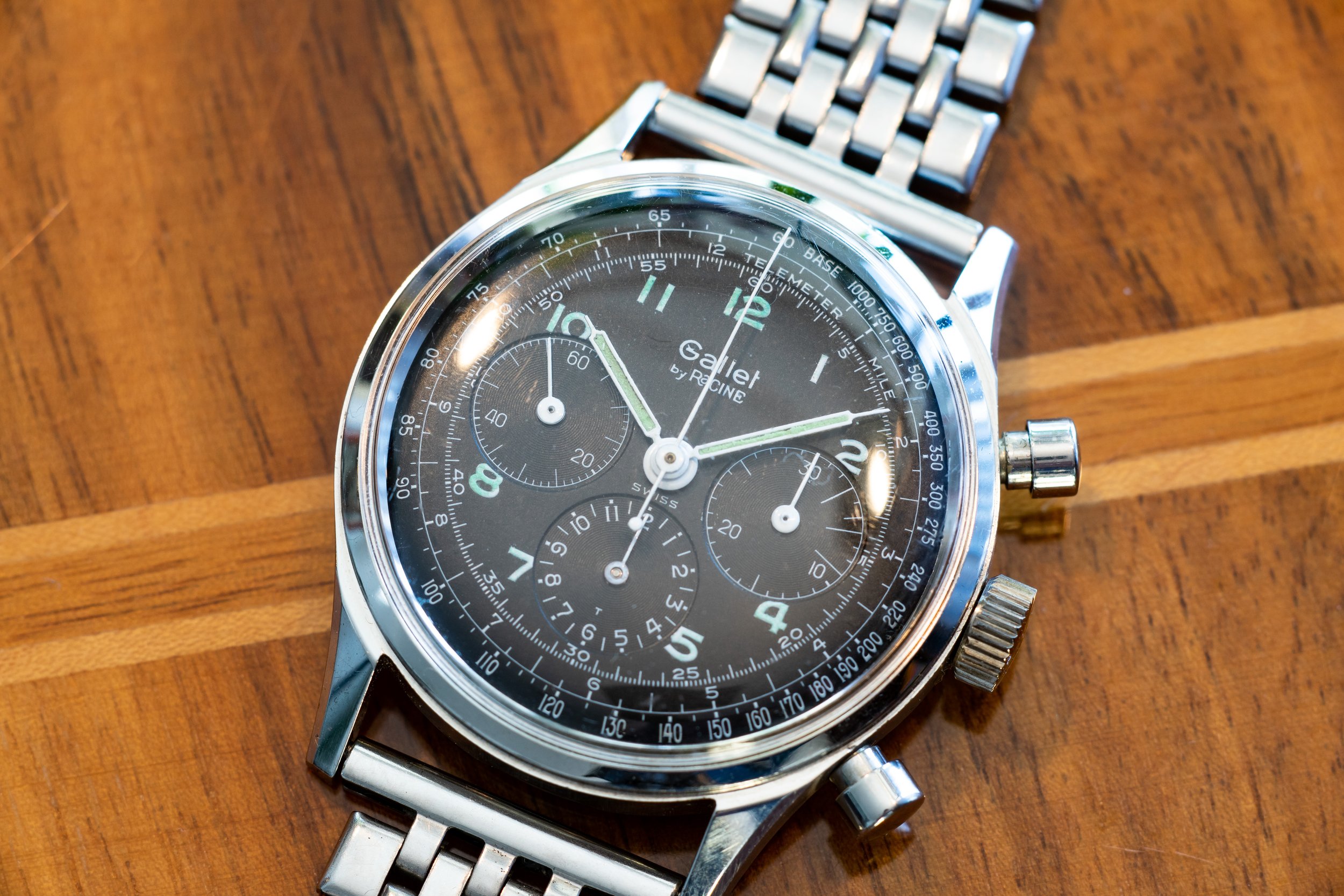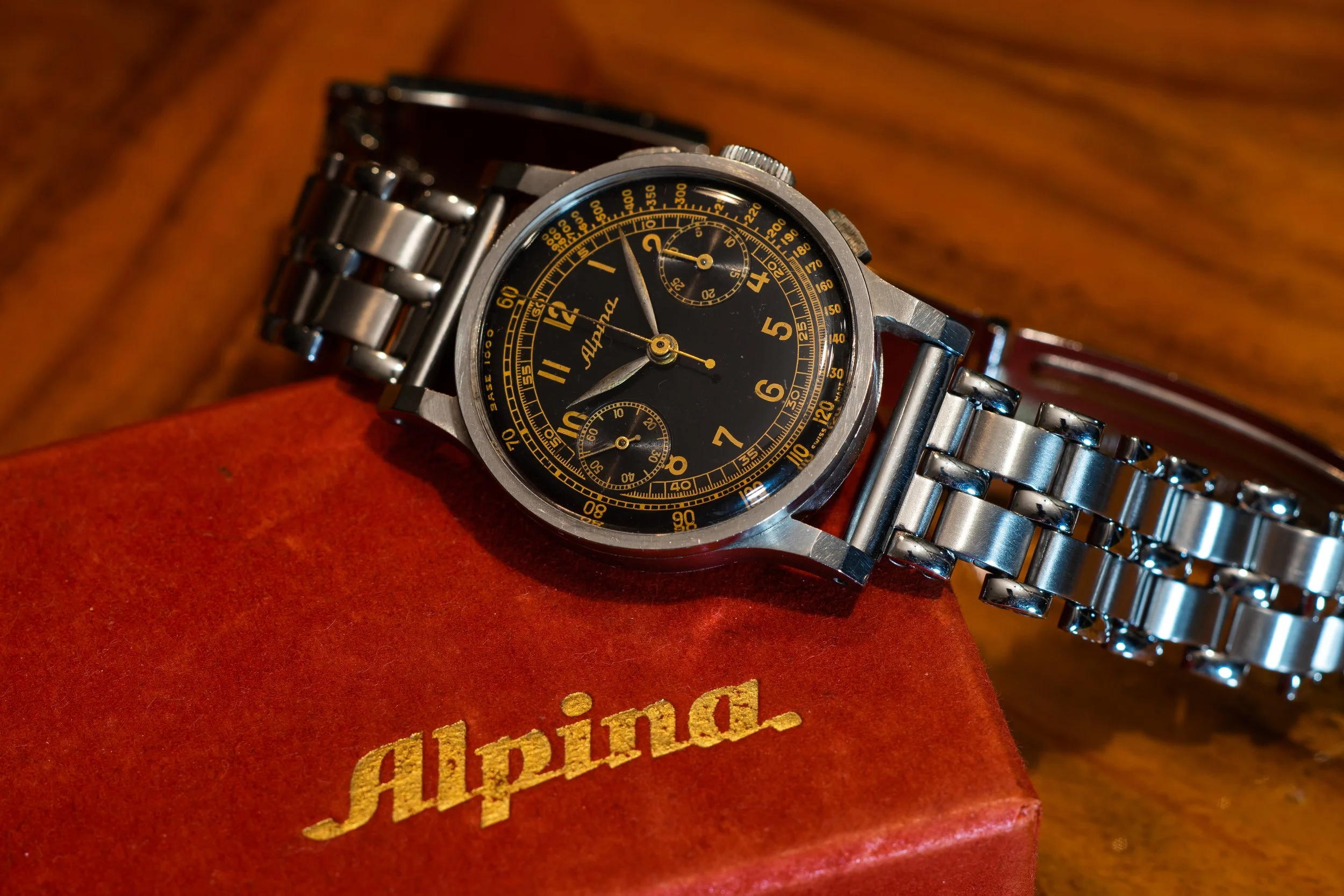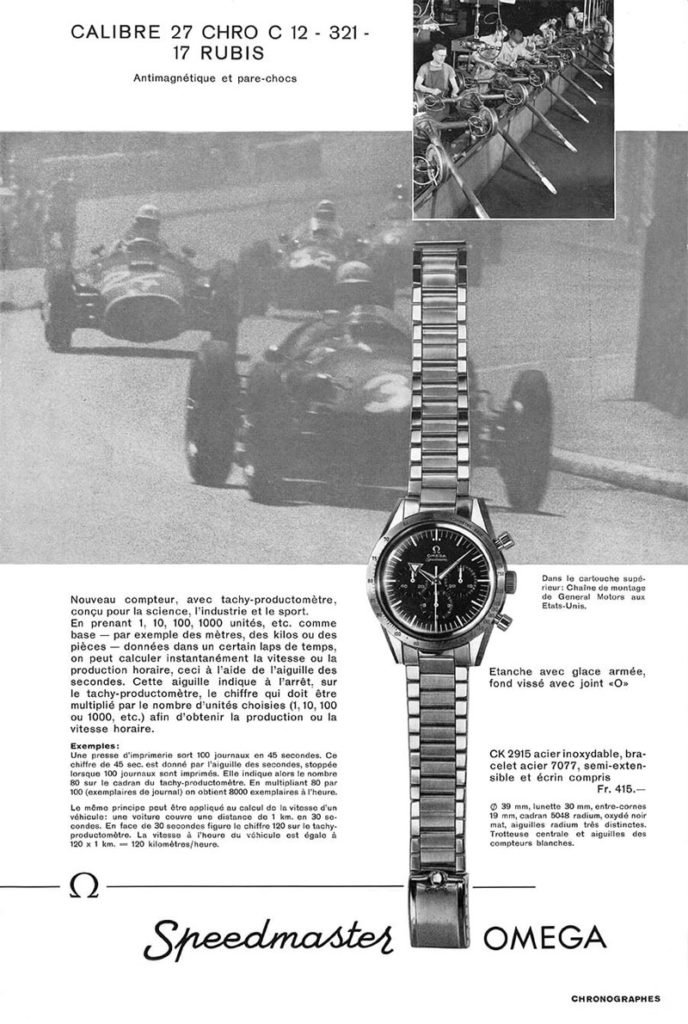Vintage Racing Watches: A race against time!
Collecting vintage timepieces isn’t just about the watch — it’s about what it represents. A small object that captures a moment in time, a feeling like the thunder of a V12 behind your back as you go flat-out through Eau Rouge.
This is a nostalgic ride through watches used in racing as they were meant to be used, on the wrists of drivers, pit crews, and timekeepers — from the 1930s to the 1970s.
The Definition of a Vintage Racing Watch
So, what exactly defines a vintage racing watch? To me, it spans a full spectrum — from high-grade professional tools built specifically for drivers, to consumer-oriented timepieces inspired by the world of motorsport. Two distinct worlds that, over the decades, gradually merged.
Left to right: 1930’s Dunlop tire watch by Marvin, 1930’s Silvana chronoghraph, 1968 Omega Grand Sport, 1970 Omega Speedmaster, 1975 Rodania 1611
Gallet Multichron 12 with a Tachymeter scale at the edge of the dial reading BASE 1000-750-600-500 etc. Telling the speed measured over distance and time.
The Chronograph
One of the defining features of many vintage racing watches is the chronograph complication, often paired with a tachymeter scale. A chronograph is essentially a stopwatch function layered onto a standard time-only wristwatch. The large central seconds hand can be started, stopped, and reset using the pushers on the side of the case.
The tachymeter scale, typically printed around the outer edge of the dial or bezel, allows the wearer to calculate speed based on travel time (e.g., kilometers per hour) — or inversely, measure distance based on a known speed.
Racing in the Early Days – 1930s to Late 1950s
The invention of the automobile inevitably led us to race them. Around the same time, World War I created a growing demand for accurate, portable timekeeping — accelerating the development of the wristwatch.
By the 1930s, as car racing gained popularity, the wristwatch had also evolved into the durable, functional tool we recognize today. Watches became more robust, featuring shock-resistant movements and waterproof cases — thanks to innovations that laid the foundation for many modern mechanical timepieces.
In terms of craftsmanship and rarity, these early racing watches stand among the finest tool watches ever made. Produced in low volumes, they were prohibitively expensive and typically worn only by those who truly needed them — professional drivers, pit crews, and race officials operating at the very edge of speed and precision.
1936 Alpina Chronograph with Tachymeter scale
1938 Auto Union being prepared for the race
With the outbreak of WWII in 1939, the demand for chronographs surged — particularly for military use. This period saw the widespread adoption of easy-to-read radium dials, more robust cases, and a growing number of brands producing chronograph wristwatches tailored for military field use.
The war, and the years that followed, brought most racing activities to a standstill. But by the 1950s, motorsport began to regain momentum. Formula 1 was born, and racing as a whole entered a new era — one marked by increasing professionalism, faster machines, and a greater emphasis on timing and precision, both on and off the track.
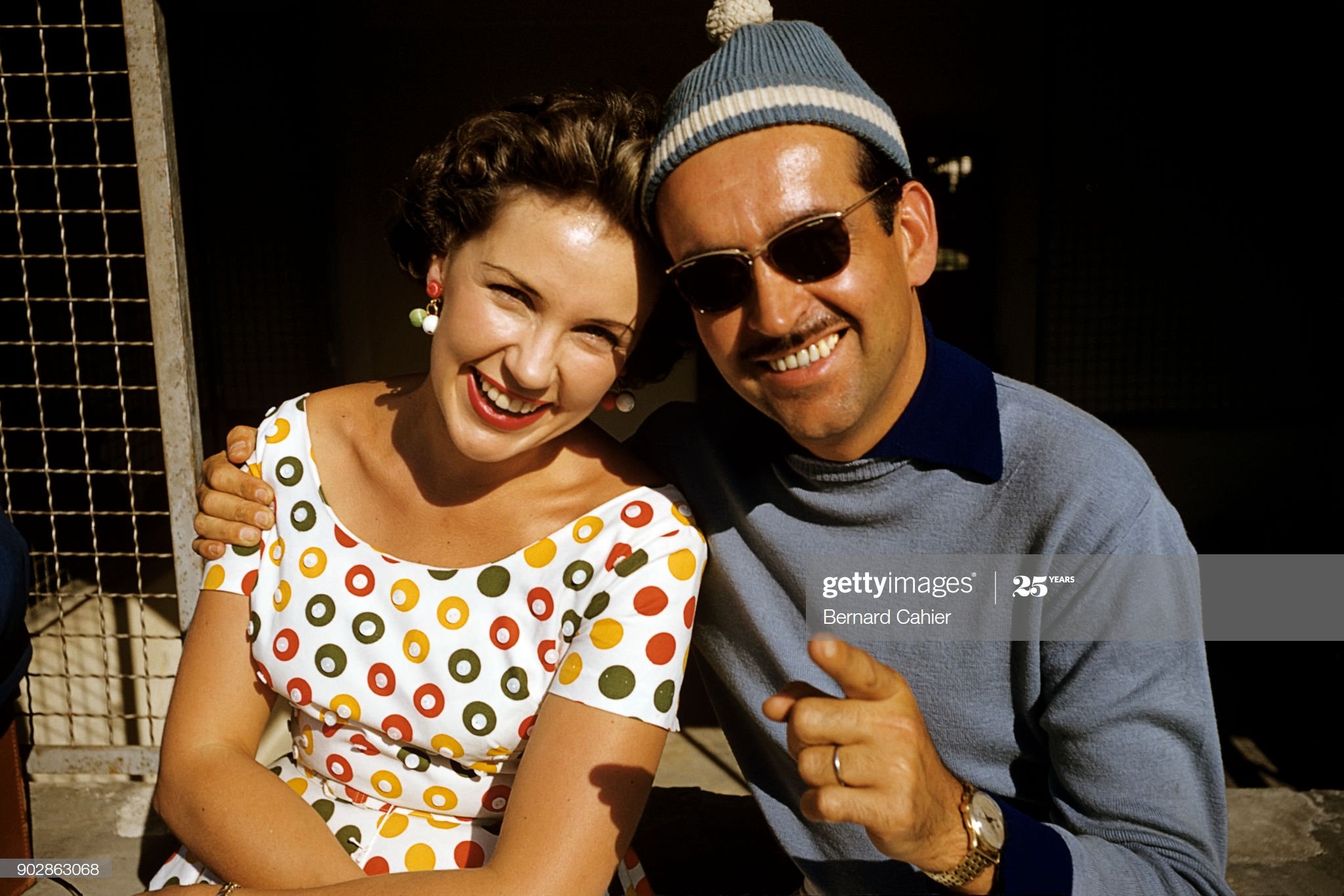
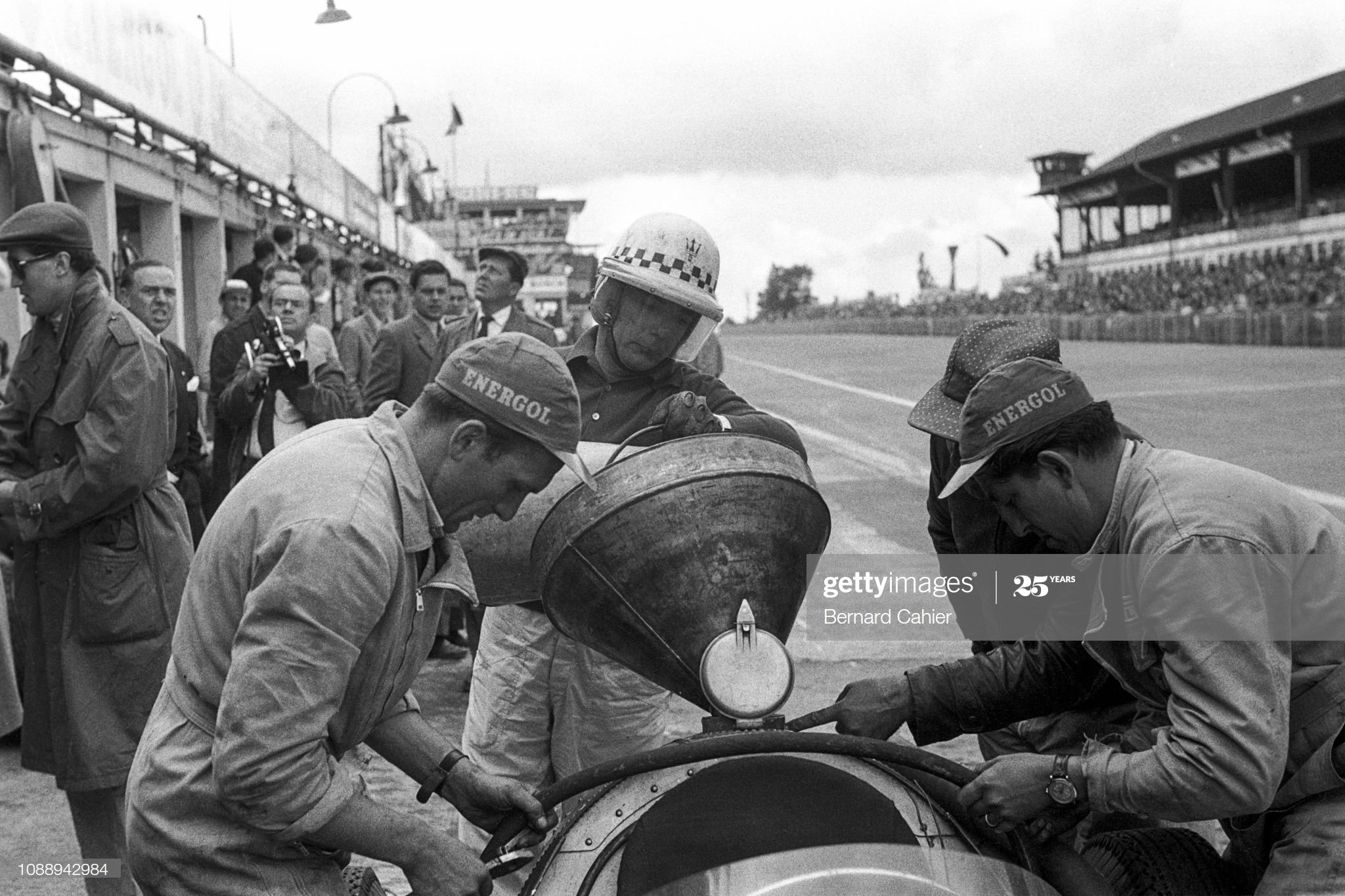
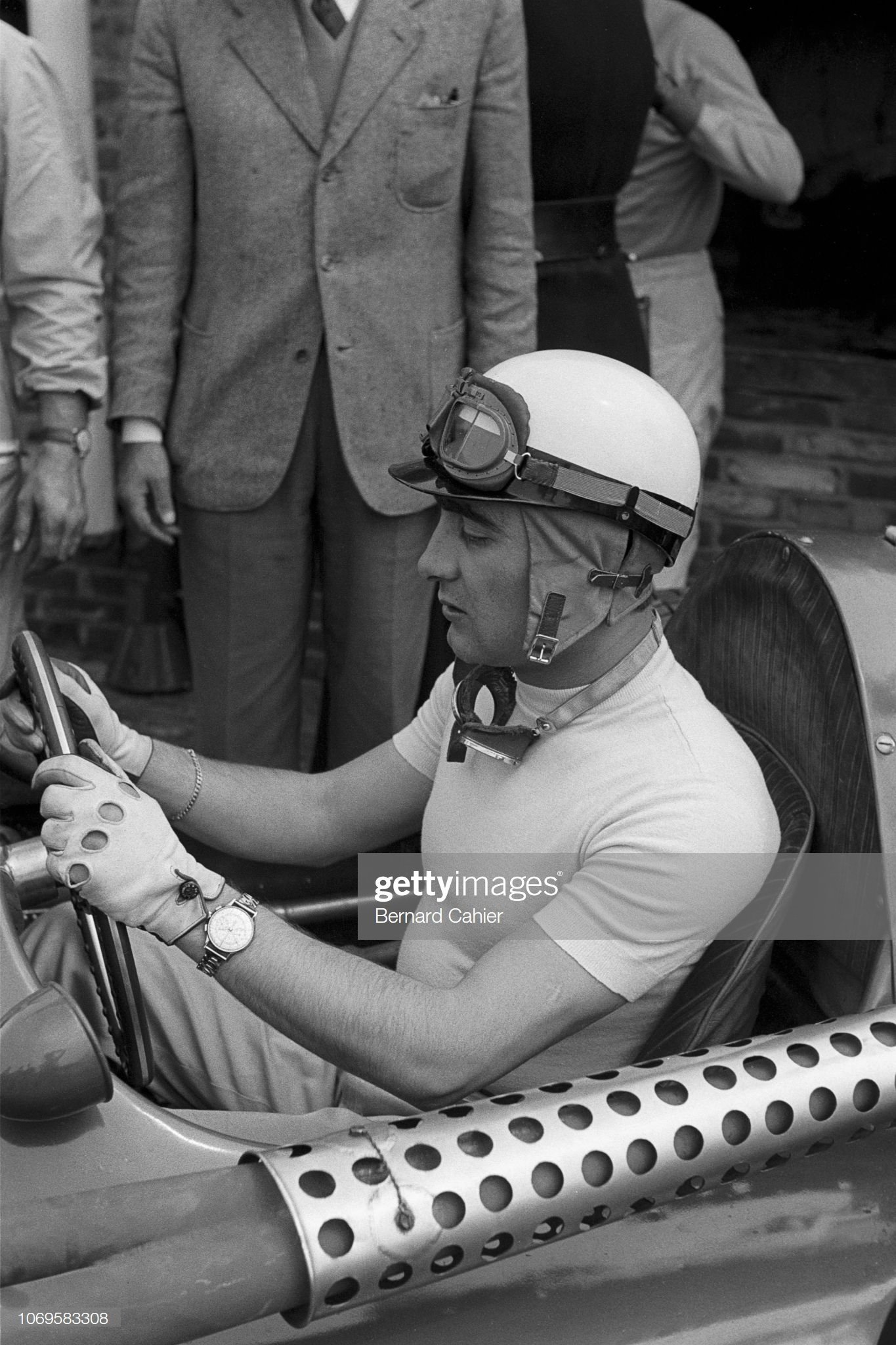
The First True Racing-Oriented Chronograph: The Omega Speedmaster – 1957
As racing surged in popularity, names like Juan Manuel Fangio, Stirling Moss, and Jack Brabham began dominating newspaper headlines. Motorsport wasn’t just a niche activity anymore — it had become a spectacle, and with it came a wave of marketing opportunities.
Watch brands took notice. Omega, in particular, saw the potential and responded with a chronograph that would go on to become iconic: the Omega Speedmaster.
Introduced in 1957, the Speedmaster was designed and marketed with drivers in mind — a precision instrument built to measure speed, endurance, and performance at the highest level. It was one of the first watches to truly merge motorsport timing with cutting-edge design, and it marked a turning point in how chronographs were perceived: not just as tools, but as symbols of speed and ambition.
The Benchmark of Telling Time in the 1960s
With the Omega Speedmaster setting a new benchmark in 1957, the 1960s saw a wave of brands stepping up with their own purpose-built chronographs. These weren’t just watches — they were tools engineered for the track, often with bolder designs and names that would go on to become legends.
Rolex introduced the Daytona. Heuer responded with the Autavia and later the Carrera. Breitling refined the Navitimer. Each of these models carried the spirit of motorsport on the wrist — durable, precise, and born from the need to measure time in a world where every second counted.
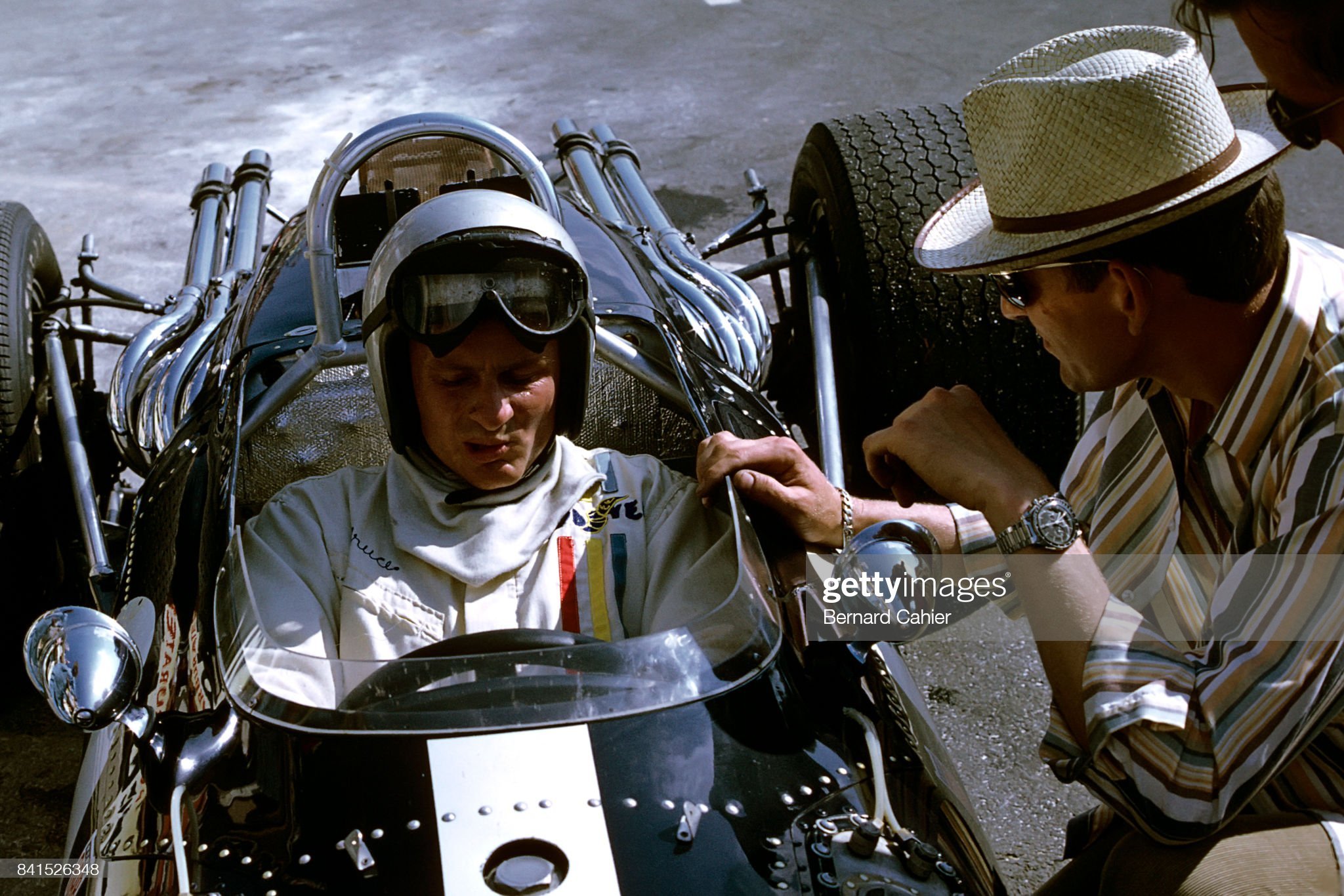
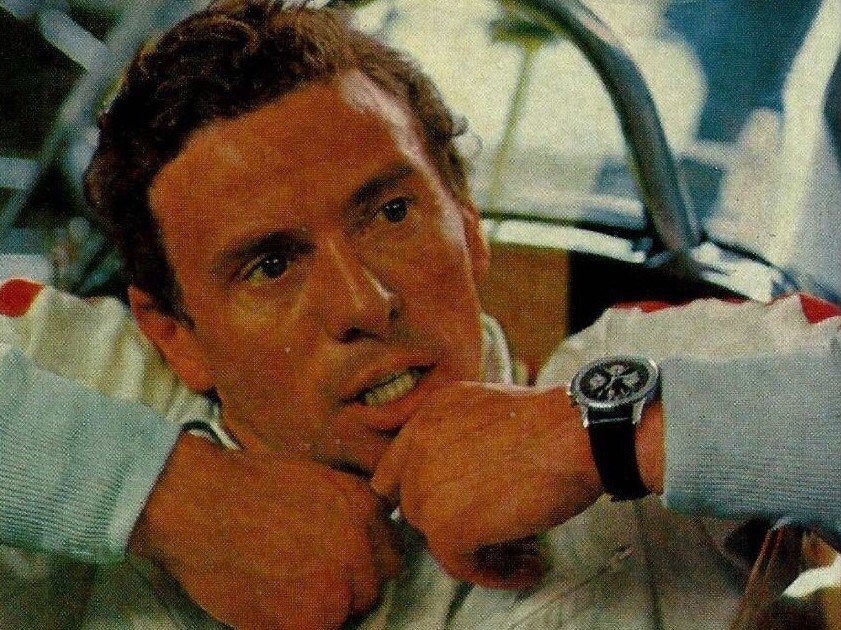

Racing in the 1960s also truly came into its own. Formula 1 embraced mid-engine layouts and aerodynamic experimentation, and junior racing gained way more popularity. The sport was evolving rapidly.
This momentum carried over into the watch world. As the demand for chronographs grew beyond professionals to racing enthusiasts and the broader public, manufacturers were pushed to produce more — and do so at more accessible price points. This shift would pave the way for the bold, colorful, and more experimental designs of the funky 1970s.
The Funky 1970s
The shift toward more consumer-focused racing watches had already begun by the late 1960s. Entering the new decade, the focus moved further away from pure tool watches for professionals and into bold design, eclectic colors, and fresh case shapes that matched the visual flair of the era.
Omega leaned into this trend with models like the Chronostop — a simplified, affordable racing watch — and by fitting the Speedmaster with the more economical Caliber 861. Seiko made waves with its entry into the chronograph market, launching one of the world’s first automatic chronographs in 1969. Meanwhile, more brands began adopting off-the-shelf movements, allowing for broader distribution and competitive pricing.
Racing style was no longer limited to the pit lane professionals — it was now on the wrists of everyday racing enthusiasts.
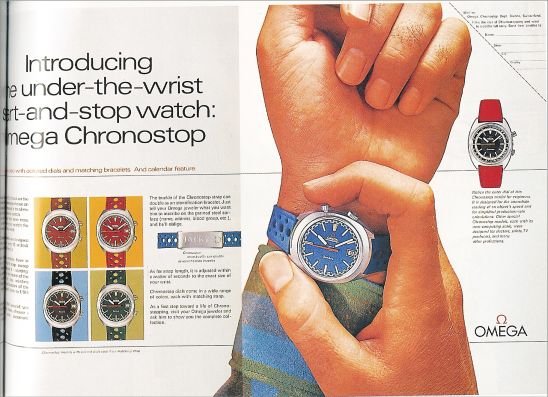
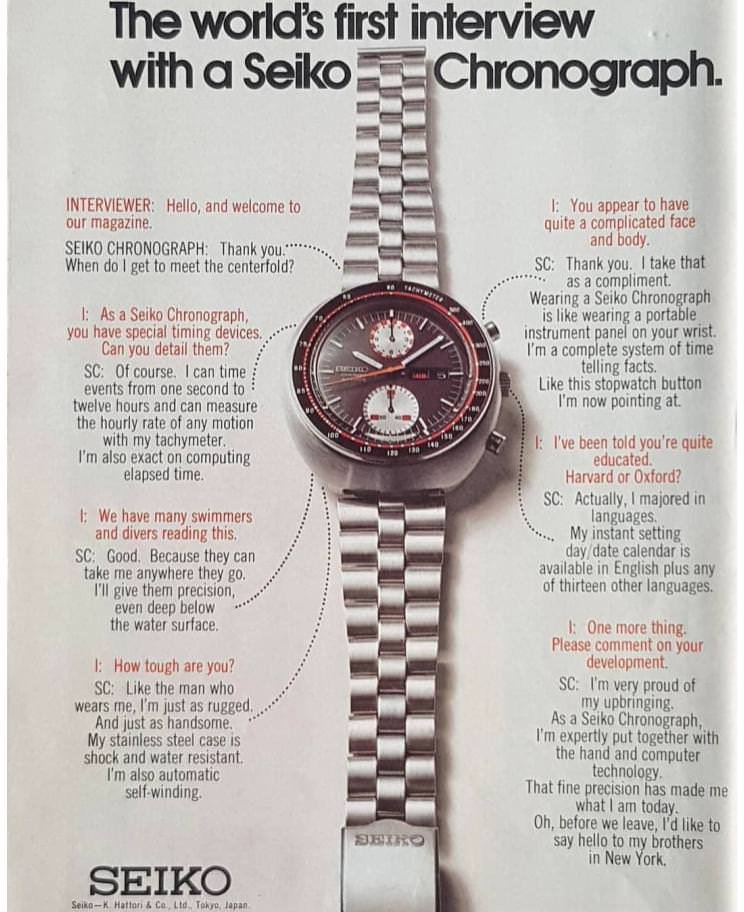

That Other Brand: Heuer
Among the rising tide of racing chronographs, one brand truly owned the track — Heuer.
Arguably the most iconic name in motorsport watch history, Heuer thrived in this new era of consumer-oriented timepieces. They delivered bold, functional chronographs with innovative designs, memorable model names, and what could easily be called the best pre-internet influencer strategy in the game.
Heuer watches were worn by legends: Niki Lauda, Jo Siffert, Mario Andretti — and perhaps most famously, by Steve McQueen in the 1971 film Le Mans, where the Monaco took center stage as the first square-cased automatic chronograph to star on the silver screen.
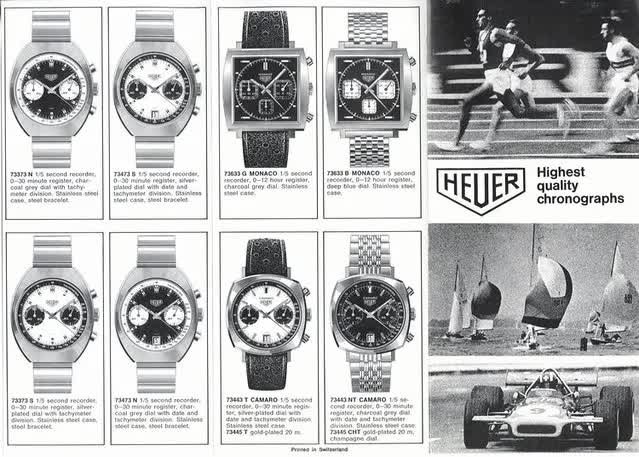
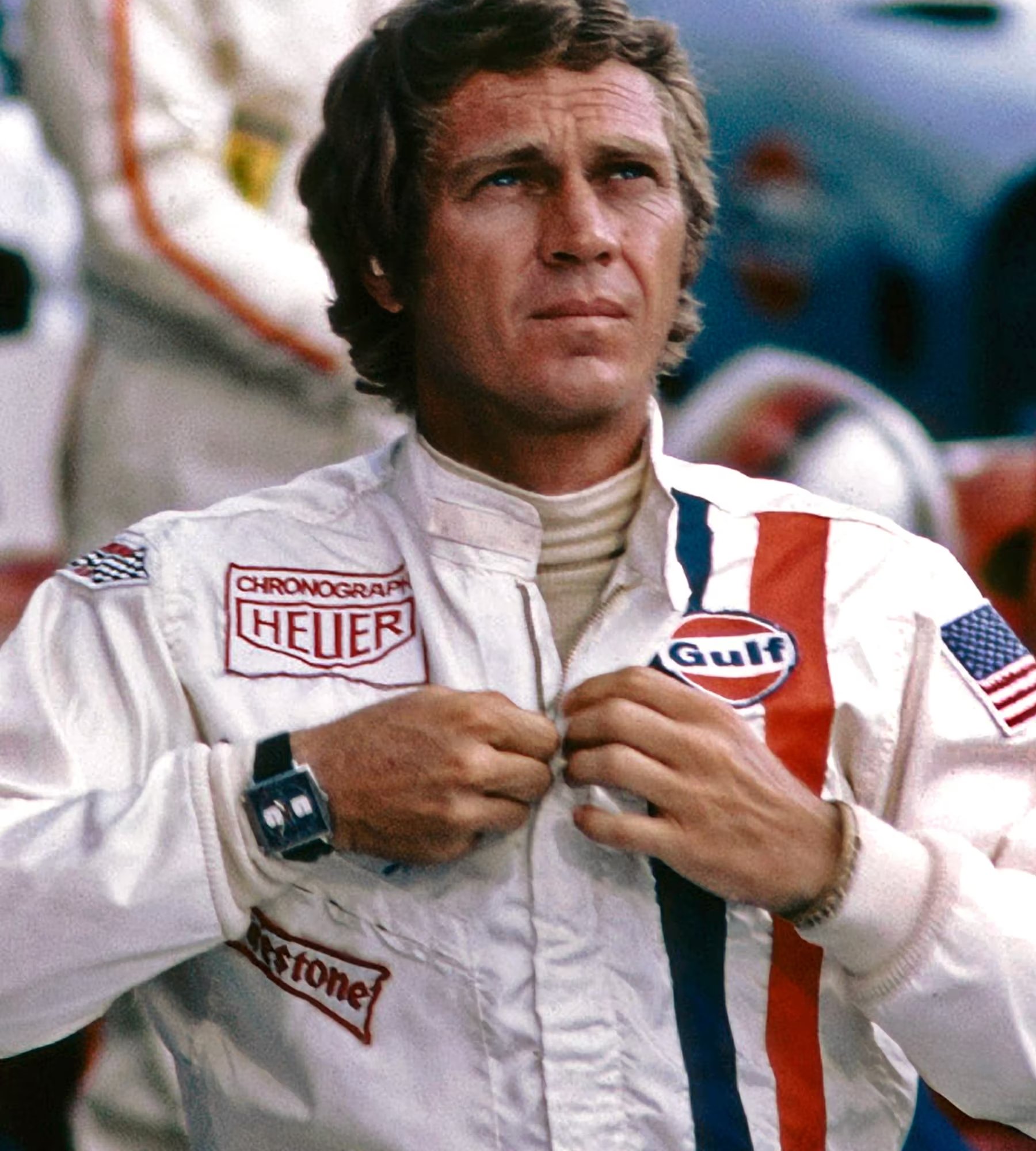
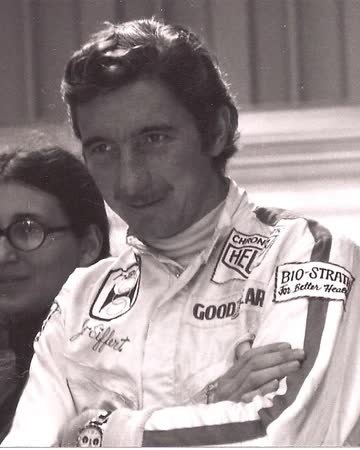
Ending an Era
The arrival of battery-powered watches in the 1970s marked the end of mechanical timekeeping as the dominant force in precision tools. Quartz technology was faster, cheaper, and far more accurate — rendering the mechanical chronograph obsolete for its original timing purpose.
Just like that, the golden era of mechanical racing watches came to a close. What remained was no longer just about utility, but about heritage, craftsmanship, and the stories they carried from the track to the wrist.
Do you own a racing related watch?
I would like to get in contact with you!
External links
Online source on everything Heuer: http://www.onthedash.com/
Photography by The Cahier Archive: https://www.f1-photo.com/



